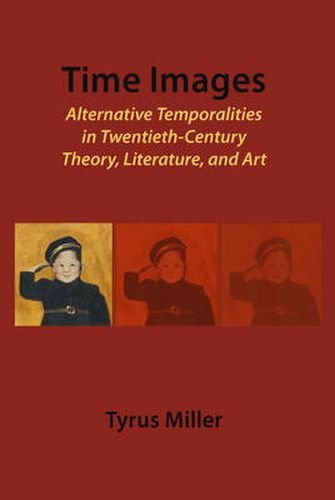Readings Newsletter
Become a Readings Member to make your shopping experience even easier.
Sign in or sign up for free!
You’re not far away from qualifying for FREE standard shipping within Australia
You’ve qualified for FREE standard shipping within Australia
The cart is loading…






The concept of time-image, this book argues, holds broad potential for the historical interpretation of cultural and aesthetic works. Many works that would not ordinarily be thought to be historical artifacts reveal their intrinsic historical character in light of this innovative interpretative concept.The book’s first section, Time-Images as Theory and Historiography, considers alternative temporalities underlying historicizing theories and specific practices of history. Examples treated here include the notion of retro-avantgardism, works by the Frankfurt School on the interrelations of images and history, and Mass Observation’s dream documentation project. The second section, Time-Images in Modernist and Postmodernist Literature, considers literary instances in which alternative notions of historical time are engaged. These include discussions of Wyndham Lewis and cultural revolution, Theodor Adorno’s reading of Samuel Beckett’s Endgame, and Pier Paolo Pasolini’s use of Antonio Gramsci in the practice of poetry and philology.The third section, Moving Images of Time, discusses questions of cinema including children’s experience in films depicting traumatic historical events, the Quay Brothers’ animated adaptation of Bruno Schulz’s Street of Crocodiles, and Sergei Eisenstein’s and Charles Olson’s engagements in Mexico with pictographic representation, etymology, and archeological time.
$9.00 standard shipping within Australia
FREE standard shipping within Australia for orders over $100.00
Express & International shipping calculated at checkout
The concept of time-image, this book argues, holds broad potential for the historical interpretation of cultural and aesthetic works. Many works that would not ordinarily be thought to be historical artifacts reveal their intrinsic historical character in light of this innovative interpretative concept.The book’s first section, Time-Images as Theory and Historiography, considers alternative temporalities underlying historicizing theories and specific practices of history. Examples treated here include the notion of retro-avantgardism, works by the Frankfurt School on the interrelations of images and history, and Mass Observation’s dream documentation project. The second section, Time-Images in Modernist and Postmodernist Literature, considers literary instances in which alternative notions of historical time are engaged. These include discussions of Wyndham Lewis and cultural revolution, Theodor Adorno’s reading of Samuel Beckett’s Endgame, and Pier Paolo Pasolini’s use of Antonio Gramsci in the practice of poetry and philology.The third section, Moving Images of Time, discusses questions of cinema including children’s experience in films depicting traumatic historical events, the Quay Brothers’ animated adaptation of Bruno Schulz’s Street of Crocodiles, and Sergei Eisenstein’s and Charles Olson’s engagements in Mexico with pictographic representation, etymology, and archeological time.